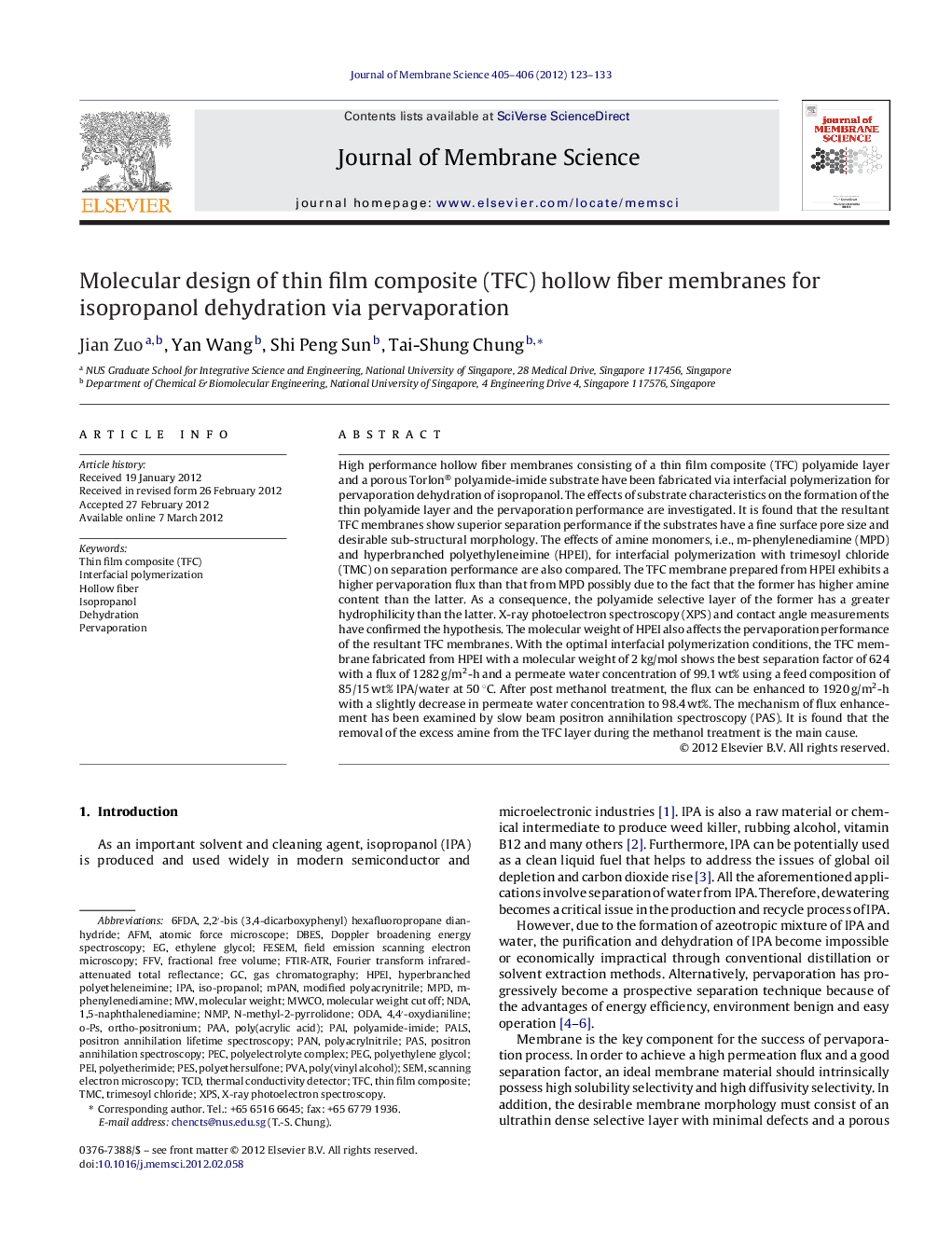| کد مقاله | کد نشریه | سال انتشار | مقاله انگلیسی | نسخه تمام متن |
|---|---|---|---|---|
| 635065 | 1456083 | 2012 | 11 صفحه PDF | دانلود رایگان |

High performance hollow fiber membranes consisting of a thin film composite (TFC) polyamide layer and a porous Torlon® polyamide-imide substrate have been fabricated via interfacial polymerization for pervaporation dehydration of isopropanol. The effects of substrate characteristics on the formation of the thin polyamide layer and the pervaporation performance are investigated. It is found that the resultant TFC membranes show superior separation performance if the substrates have a fine surface pore size and desirable sub-structural morphology. The effects of amine monomers, i.e., m-phenylenediamine (MPD) and hyperbranched polyethyleneimine (HPEI), for interfacial polymerization with trimesoyl chloride (TMC) on separation performance are also compared. The TFC membrane prepared from HPEI exhibits a higher pervaporation flux than that from MPD possibly due to the fact that the former has higher amine content than the latter. As a consequence, the polyamide selective layer of the former has a greater hydrophilicity than the latter. X-ray photoelectron spectroscopy (XPS) and contact angle measurements have confirmed the hypothesis. The molecular weight of HPEI also affects the pervaporation performance of the resultant TFC membranes. With the optimal interfacial polymerization conditions, the TFC membrane fabricated from HPEI with a molecular weight of 2 kg/mol shows the best separation factor of 624 with a flux of 1282 g/m2-h and a permeate water concentration of 99.1 wt% using a feed composition of 85/15 wt% IPA/water at 50 °C. After post methanol treatment, the flux can be enhanced to 1920 g/m2-h with a slightly decrease in permeate water concentration to 98.4 wt%. The mechanism of flux enhancement has been examined by slow beam positron annihilation spectroscopy (PAS). It is found that the removal of the excess amine from the TFC layer during the methanol treatment is the main cause.
Figure optionsDownload high-quality image (168 K)Download as PowerPoint slideHighlights
► TFC hollow fiber membrane with PAI substrate for IPA dehydration via pervaporation.
► Effect of hollow fiber substrate morphology on the formation of TFC membranes.
► Effect of amine monomer type on the performance of the resultant TFC membranes.
► Optimization of interfacial polymerization condition.
► Post methanol treatment affects the performance of the resultant TFC membranes.
Journal: Journal of Membrane Science - Volumes 405–406, 1 July 2012, Pages 123–133